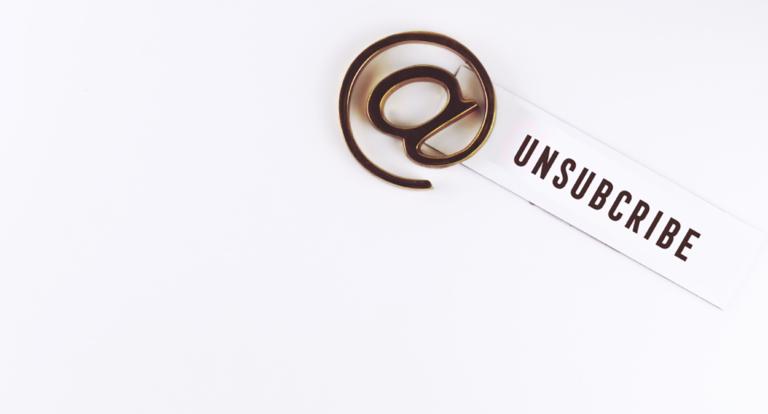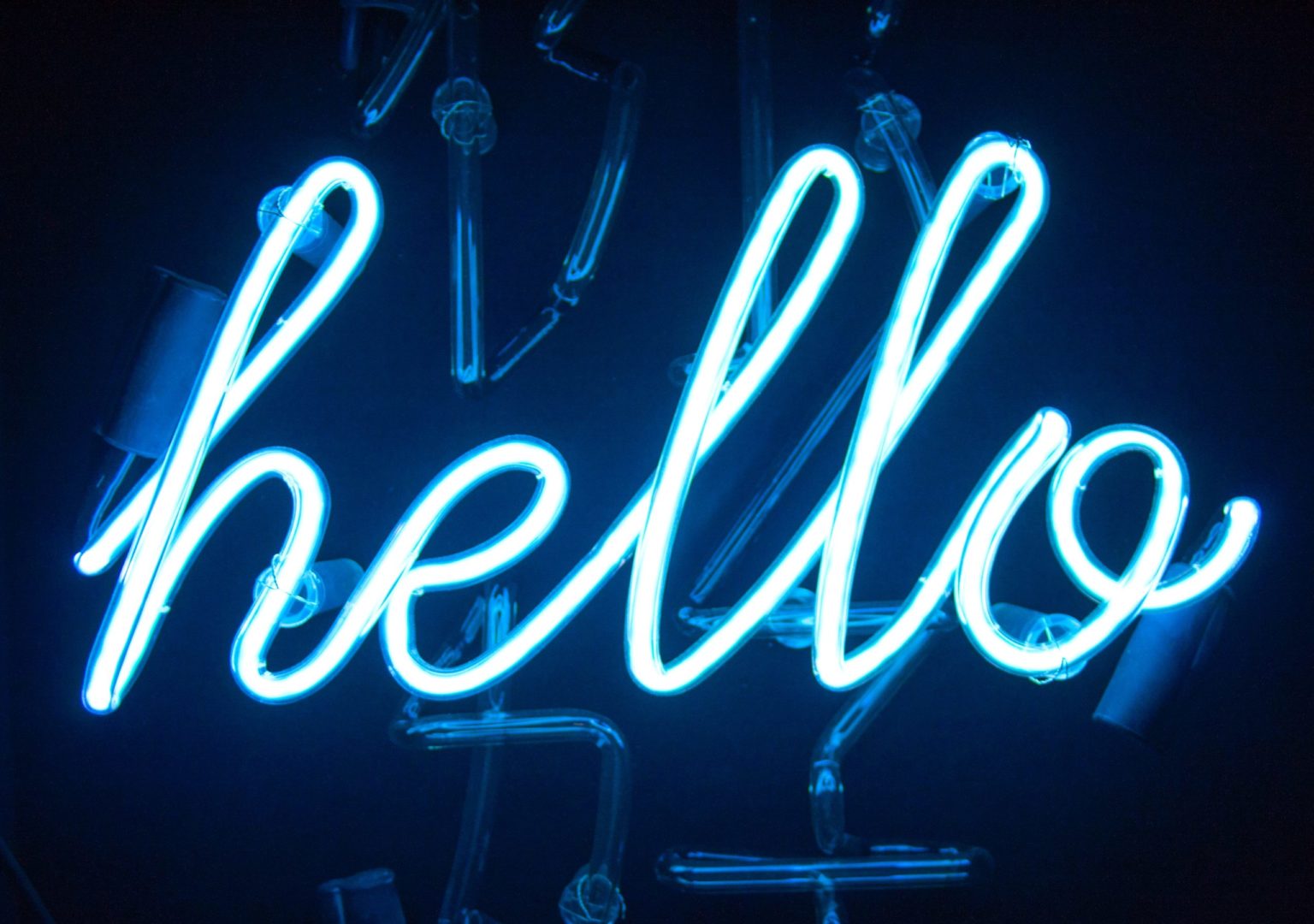
The Email Welcome Series: 4 Tips to Drive Engagement
On average, only 13% of retailers’ new email subscribers will go on to make a purchase. But increasing this rate by even 1% can grow revenue by 7.6%.
If that wasn’t enough, 55% of retailers’ email subscribers have never made a purchase, and among non-buyers, the average time from email capture to unsubscribe is a mere 47 days.
The point in all this? Your welcome series matters — a lot.
What is a Welcome Series – and Why Does It Matter?
A welcome series is a sequence of emails designed to quickly build loyalty with new subscribers. These emails often thank subscribers for joining an email list, provide information about your brand values, and give them a snapshot into what to expect as a subscriber.
That’s a simple enough concept. So, let’s take a step back for a moment and think about why shoppers sign up to receive emails in the first place. Most often, they do so to:
- Bookmark an interesting retailer
- Find out more about a retailer or test them out
- Research certain products
- Get a discount
In every single one of these cases, shoppers are saying “impress me and make me buy.”
Now let’s think about the outcomes of that. Every shopper who signs up to receive emails from your brand voluntarily hands over their information and, here’s the real kicker, trusts you with it. In return, your marketing team needs to demonstrate that you deserve that trust, and your welcome series is your first opportunity to do so.
In most cases, your welcome series gives shoppers one of their first glimpses into your brand image. It’s also the first interaction that you fully own from start to finish, as you know exactly where your email subscribers came from and can point them to a specific destination.
Finally, because shoppers who receive your welcome series have just signed up to receive emails, these messages boast extraordinarily high engagement. In some cases, retailers see a 100% open rate, with many customers revisiting these emails multiple times.
How Many Emails Belong in a Welcome Series?
The answer to this question is a little unsatisfying: It depends.
By definition, a welcome series should have at least two emails in it. Typically, the first email is a simple “thank you” to the new subscriber. From that point on, retailers need to get more personal – and depending on an individual’s activity and interests, you may need to send several more emails.
The most important part of a welcome series isn’t how many emails it has. Rather, retailers should use the welcome series to communicate as much information as the subscriber needs to become engaged.
4 Tips to Build an Automated and Personalized Welcome Series
The majority of welcome series begin with an email about what to expect going forward, and this is an important first message to get in front of new email subscribers. But from the very start, bringing elements of personalization to your welcome series can set the tone for a strong relationship with customers built on trust and relevance.
So how can you create a more personalized welcome series that helps earn shoppers’ trust and boosts their likelihood to engage with your marketing going forward? Start here:

Create a Natural Progression from Welcome to Long Term Engagement
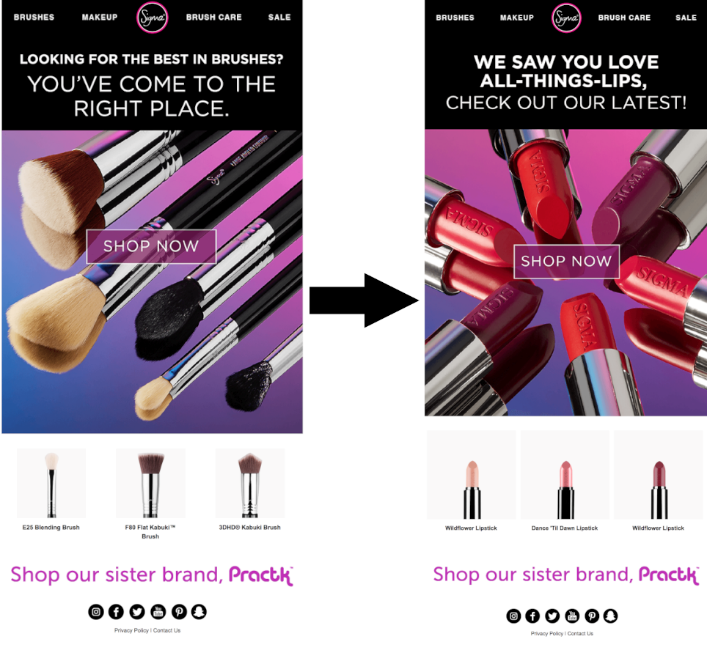
What happens once shoppers subscribe to your list and receive their welcome email? You need to naturally assimilate them into your full email program so that they don’t immediately get blasted with emails before getting to know your brand.
Your goal should be to create a personalized welcome series that flows naturally into a tailored email cadence. To do so, consider asking for customers’ preferences as part of your welcome series and adding in personalized product recommendations based on any past browsing behaviors you’ve already captured. From there, you can ease subscribers toward your full email program, with an emphasis on converting non buyers and driving that all-important second purchase from subscribers who signed up for emails while making their first purchase. To do so, you should pull shoppers from untargeted batch emails as soon as they indicate an interest in a specific product or category and then nurture them accordingly.
Don’t Use Promotions as a Crutch
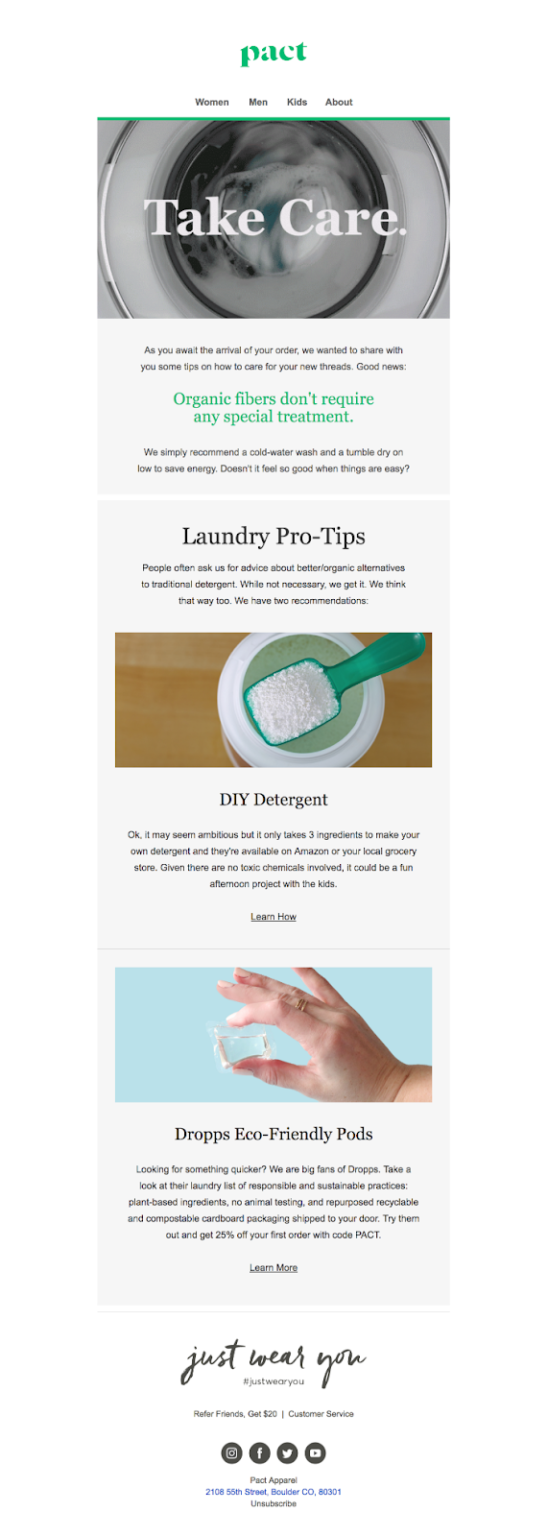
Many retailers go promo-heavy with their welcome series, for example by offering 20% off for all new email subscribers. While this type of promotion does have its place, you need to be careful about how much you rely on it to bring new email subscribers into the fold.
Often, it’s exactly this type of promotion-heavy welcome strategy that leads to major fluctuations in email list size and unsubscribes. That’s because shoppers will sign up for emails just to receive the promotion and then promptly unsubscribe. In general, the shoppers who are solely after a discount don’t tend to become loyal, long term customers. To avoid this situation and attract new, high value customers, you need to build a welcome series that offers shoppers more than just a promotion (perhaps it’s insider tips, first dibs at new products and/or ultra-relevant recommendations).
Show New Subscribers You’re Listening
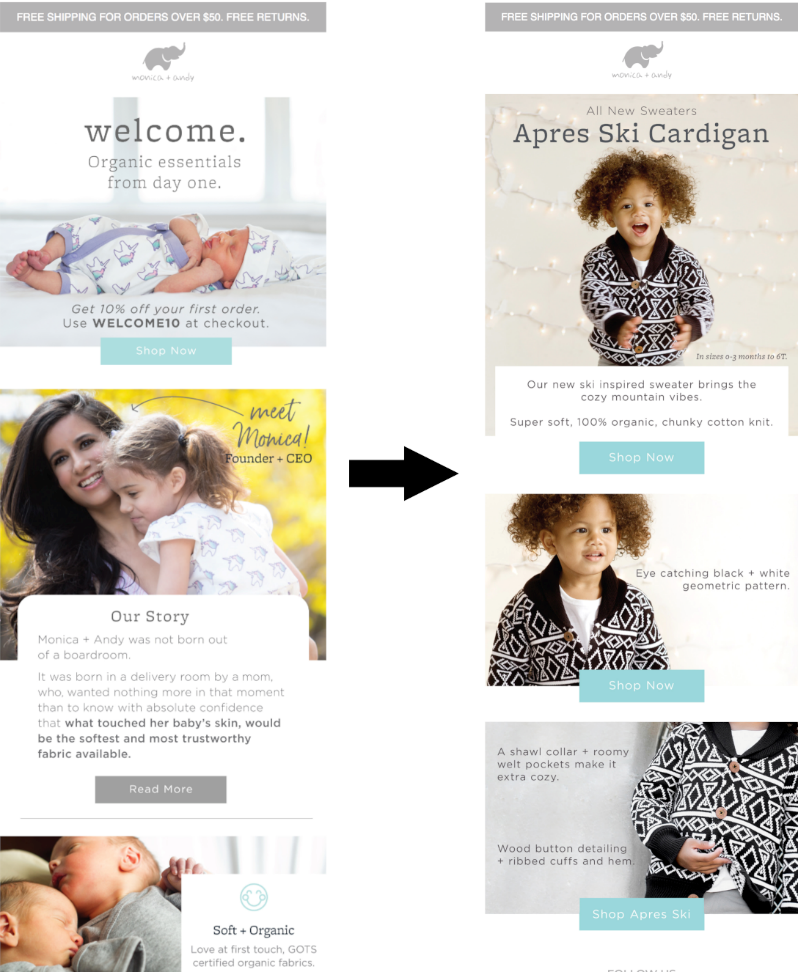
Your welcome series is your first opportunity to get in front of shoppers at a truly 1:1 level, and that makes it especially important to show them you’re listening. For example, if I’m a man who was browsing men’s products on your site before I signed up for emails, I certainly don’t want to see an email full of dresses.
To win over new subscribers and keep them hooked, you need to show you’re listening to the signals they share from day one. Doing so requires using any data you have to personalize offers and products in batch emails as early as possible (having a clear connection between customer, behavior and product data, plus the ability to act on that data, is key here). You also shouldn’t be afraid to ask customers what you don’t know, as well-managed preferences can go a long way.
Recognize — and Celebrate — Your Customers’ Differences
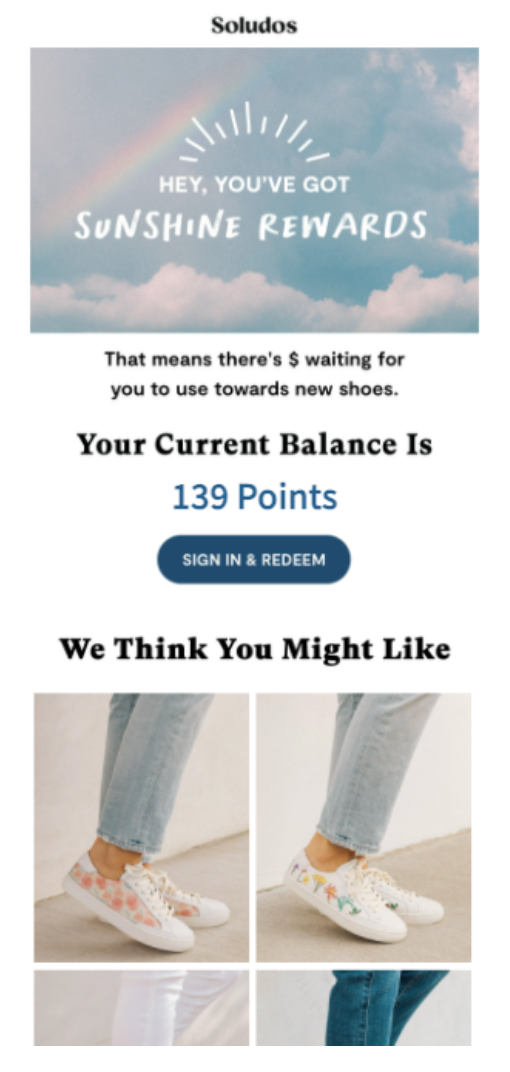
Finally, look for opportunities to engage with customers differently based on their relationship with your brand. When it comes to your welcome series, two of the best ways to differentiate among groups of buyers are based on purchase history and loyalty status.
Looking at purchase history, many shoppers will subscribe to your emails as part of their research process ahead of a first purchase. However, many will also subscribe in the course of making their first purchase. It’s essential to treat these two groups differently since they fall into very different stages of their relationship with your brand.
In terms of loyalty status, it’s important to recognize members of your loyalty program early on, for example by thanking them for being a member or by sharing program updates and special offers. Meanwhile, you can create a second stream of your welcome series for non-members in which you advertise program benefits and entice those shoppers to join.
Conclusion: Your Welcome Series is Critical to Success
Quite simply, your welcome series provides shoppers with a first impression of your brand and can set the tone for your entire relationship with them. And new subscribers will not wait around if they don’t like what they see, so it’s essential to get relevant as quickly as possible and show these shoppers they can continue to trust your brand.
How else can you get relevant with new shoppers quickly? Click here to find out more about what it takes from your welcome series and beyond.





